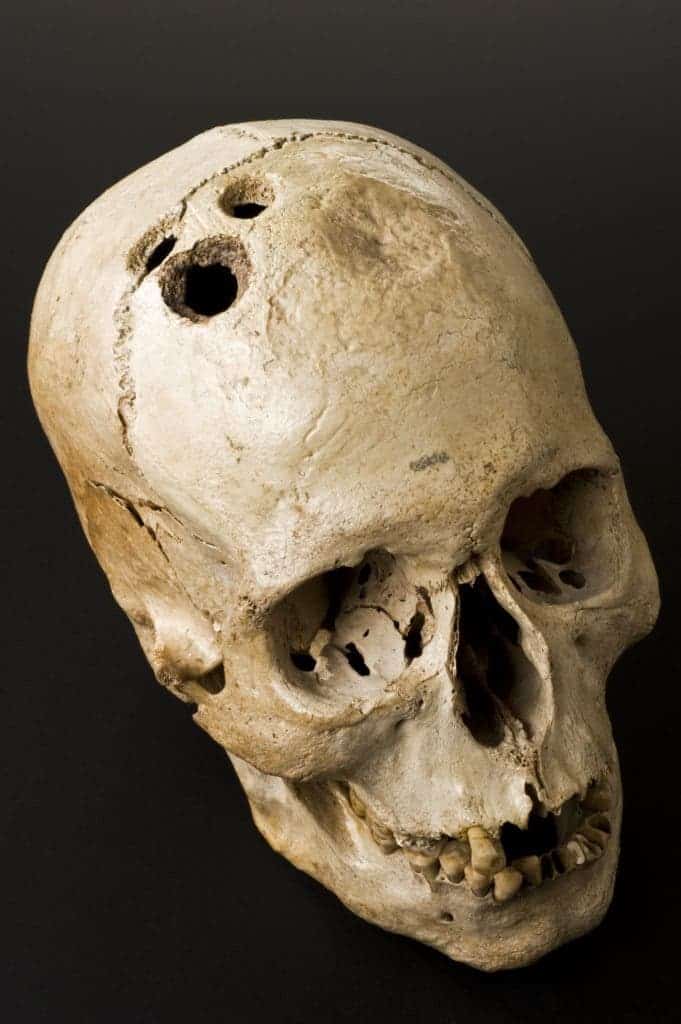Surprising as it may seem, people from the Inca Civilization were better than their medical counterparts during the Civil War at a very particular type of surgery: trepanation.

If you think about it, drilling through the cranium without anesthesia and antibiotics doesn’t sound like something you’d want to do — ever. But trepanation, as the procedure is often called, has been around for over 5,000 years. Judging by archaeological finds, no other civilization has practiced trepanation more than the Inca.
The Incas were seemingly experts at trepanation, even practicing the very risky practice of “multiple trepanation.” Over the years, researchers have found more than 100 subjects of trepanation from the Inca Empire. Now, in a new study, David Kushner, a neurologist at the University of Miami in Florida, teamed up with John Verano, a bioarchaeologist at Tulane University in New Orleans, Louisiana, to systematically study trepanation’s success rate in the Inca people, and compare it with the success rate of others throughout history.
As you can imagine, trepanation was a very dangerous procedure, and the patient didn’t always survive. The team examined 59 skulls from Peru’s southern coast dated between 400 B.C.E. and 200 B.C.E, 421 from Peru’s central highlands dated from 1000 C.E. to 1400 C.E., and 160 from the highlands around Cusco, capital of the Inca Empire, from the early 1400s C.E. to the mid-1500s C.E. It was fairly easy to see if the patient survived the procedure: if they had healing marks around the wound, then they survived. But if no healing was present, they didn’t.
They found that people gradually got better, with the Inca apparently reaching a remarkable peak.
“The outcomes were amazing,” Kushner says. Just 40% of the earliest group survived the operations. However, 53% of the next group survived, followed by 75% to 83% during the Inca period, the researchers reported this month in World Neurosurgery. (A shocking 91% of patients survived in an additional sample of just nine skulls from the northern highlands between 1000 C.E. and 1300 C.E.).
The holes themselves got more careful and clean — you can see more careful drilling and grooving.
“What we’re looking at is over 1000 years of refining their methods,” says Corey Ragsdale, a bioarchaeologist at Southern Illinois University in Edwardsville who wasn’t involved in the study. “They’re not just getting lucky. … The surgeons performing this are so skilled.”
Impressively, the Inca were even better than their counterparts centuries later. According to Civil War medical records, when the practice was still fairly widespread, some 46% to 56% of cranial surgery patients didn’t survive the procedure — whereas in Inca times, that figure was just 17% to 25%.
However, this doesn’t necessarily mean that Civil War doctors did a worse job. This might have a lot to do with the type of injury the trepanation was supposed to treat.
Trepanations probably emerged as a way to treat head injuries. After a traumatic injury, the brain commonly swells and accumulates fluid. The trepanation would clean up such fractures and ease pressure, so it might have actually been beneficial in many instances. The thing is, during the Civil War times, wounds were often caused by cannonballs or gunshots and were treated in cramped, unsanitary conditions. This would have greatly increased the risk of infection and reduced survival rate. The Inca were likely much more careful with the procedure, despite having less access to medical technology.
However, this doesn’t do anything to reduce the merit of the Incas. Emanuela Binello, a neurosurgeon at Boston University who has studied trepanation in ancient China, says that the survival rate of trepanations in Peru “astonishing.” “It’s a credit to what these ancient cultures were doing,” she says.
Journal Reference: David Kushner, John W. Verano, Anne R. Titelbaum. “Trepanation Procedures/Outcomes: Comparison of Prehistoric Peru with Other Ancient, Medieval, and American Civil War Cranial Surgery”. DOI: https://doi.org/10.1016/j.wneu.2018.03.143



